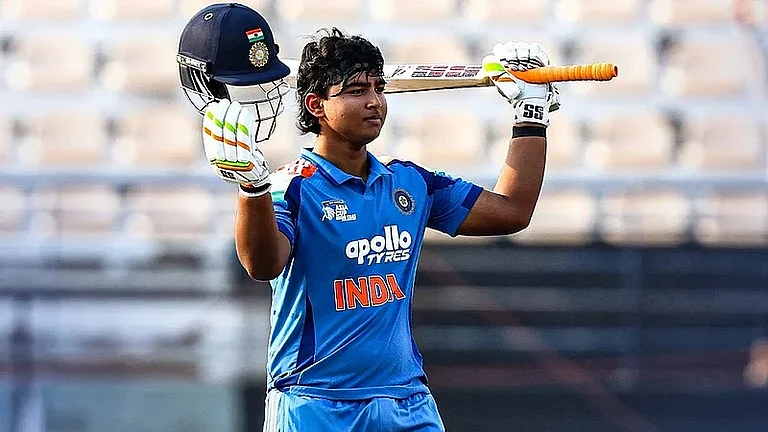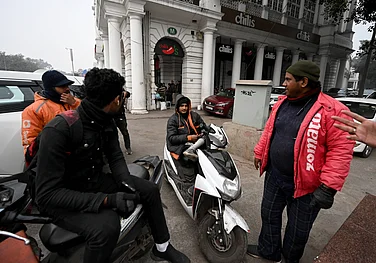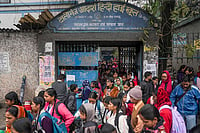The mettle of a nation is often tested in small things. Less than two years ago,the India Habitat Centre (IHC) in Delhi finally opened with much fanfare as an alternativevenue to the India International Centre for intellectual activities. Much went wrongduring the teething period, but one segment of its activities got off to a flying start.This was culture. From the outset, the IHCs programmes made it the most sought-afterentertainmen venue in Delhi. But success never fails to attract detractors. A move isgathering force to curtail its cultural activities. Had this been a lone example ofcultural nihilism, one could have treated it as an aberration. But unfortunately, thechange of values that underpin the attempt to curtail culture at IHC is growing strongerday by day. What makes it especially corrosive is that it reveals itself not in an overthostility to culture, but in a covert neglect. The neglect takes innumerable forms, butall of them add up to the same thing: the gradual abandonment of culture to the mercy of the market. Unfortunately, as the West found out, cultureespecially cultureembodied in the performing artsdoes not fare well in the marketplace. In a societywhere there is no sustained patronage of the arts, the years of tutelage for perf o rmersare too long; the remuneration for performances too small and opportunities to perform toofew and too uncertain to make a lifetimes devotion to a performing art attractive.Patronage systems shield the artiste from these rigours of the marketplace. When theydecay, the art, more often than not, dies out. If it survives, it often does so only bylosing its soul to commerce .
In India, the traditional patronagestructure the princely courts for music andthe temple for classical dance forms succumbed in stages throughout the firsthalf of the 20th century. Princely patronage began to decline when rulers got Europeangovernesses and tutors for their offspring and when they were divested of their kingdomsand later their privy purses after independence. The patronage of the temple declined asmiddle class Victorian morality began to inject the new urban middle classes with adistaste for the art of the Devadasis. Ironically, this aversion culminated afterindependence and not before, in the passage of acts banning dancing in temples. But bothmusic and dance survived because they found new patrons in courts of smaller rajas andtalukdars, notably in south and west India and in the upsurge of Indian nationalism of the20s and 30s. As Isaiah Berlin and a host of political philosophers have noted,the first manifestations of European nationalism in the 19th century took place in cultureand aesthetics. Much the same thing happened in India 50 years later. Ironically oncemore, even before independence, the main agent was the state. Throughout the long declineof princely patronage, Indian music was sustained by All India Radio (A I R) , whichbrought hundreds of artistes into countrywide fame and made the best of them householdnames. Dance came under the wing of a new generation of modern, educated middle classwomen who were not only nationalists but also Indias first real feminists. These newperformers brought dance and dance drama out of the precincts of the temple onto themodern stage.
For three decades after independence, the nationalist surge provided a patronagestructure for the performing arts . Then it too ebbed away under the remorseless pressureof commerce. By degrees, state patronage dwindled as the central and state governmentscame under financial pressure. Rising tariff s for halls, printing and advertising pushedup the cost of arranging concerts far more rapidly than the audiences capacity topay. Organisers became ever more dependent on advertising support, which became harder andharder to get as the claimants multiplied. But the worst damage was done by the creepingchange of values brought about by the advance of capitalism. A telltale sign of the changewas the fledgling Doordarshans refusal in the 70s to do for classical musicand dance what A I R had done for half a century for music. Instead, citing the need forpopularity, it preferred to air Bombay film music under programmes like Chitrahaar andpaid only token obeisance to the classical perf o rming art s .
Today, the decline of interest inand patronage for culture isall-pervasive. Newspapers devote half a page to advertising, free of cost, the trashyofferings of television channels but demand payment for announcing classical performances.No government has created a single performing arts centre on the lines of the LincolnCentre in New York. Rising costs have pushed private patronage into the hands of bigcorporations. These are more interested in big-name concerts that boost the corporateimage than in sustaining music or dance. Perf o rmers have caught on and demand huge sums.This leaves less and less money to support younger and less commercialised perf o rmers.As a result, there are fewer opportunities and less money for the new generation ofmusicians and dancers.
I began with an example so let me end with one. On Thursday, March 11, Pt Ravi Shankarwill be giving a benefit concert in Delhi to raise money for SPIC-MACAY. One wouldhave thought that a 21-year-old student organisation which arranges over 800 perf ormances a year wouldnt need an emergency shot in the arm. But that alas is not so.Instead, for SPIC-MACAY, every year the going has become just a little harderr. Does itmatter if classical art forms die? Would it not be better if they were forced to change toconform to changing public taste? Why should the performing arts be an exception to thelaw of the market? The answer is simple. Our culture defines us. Without it, we becomemimic men in search of a hand-me-down identity.























